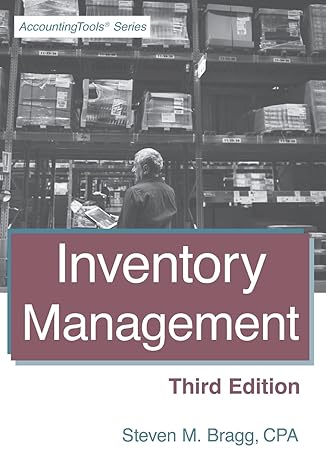Answered step by step
Verified Expert Solution
Question
1 Approved Answer
Founded by entrepreneur Jeff Bezos in Seattle in 1994 as one of the first dotcom firms, Amazons business model is built entirely around emerging digital
- Founded by entrepreneur Jeff Bezos in Seattle in 1994 as one of the first dotcom firms, Amazon’s business model is built entirely around emerging digital technology. It has grown to become a $315.5 billion turnover e-commerce mega-retailer and cloud computing business, with a brand value that has quintupled in the past five years (Financial Times 2019). As it started life as a small bookseller, at the heart of Amazon’s success is the firm’s ability to sell books at a significantly reduced price compared with more traditional book retailers by leveraging its e-commerce platform as a value-creating strategic resource. The more Amazon achieved increasing economies of scale, the more significant the cost savings it could make to its books, which allowed Amazon to sell its product at an unmatchable price compared with its competitors. Additionally, Amazon was at helm of an emerging new technology, developing the Kindle, which gave booklovers the convenience of hundreds of book titles on a single device. Amazon sold Kindles at a break-even price, but the additional book downloads from Amazon’s cloud server drove the firm’s marginal costs down even further, and compensated for the lack of profits generated from Kindle sales. Amazon’s ability to invest in emerging technologies put enormous pressure on other booksellers, who were struggling to compete. Had Waterstones in the UK not been able to reconfigure its activities to provide incentives for people to visit their stores rather than buy their books from Amazon (as discussed in the opening case study), Waterstones would have followed other well-known book retailers, such as Borders in the USA, into administration. Amazon remains a constant threat to many iconic independent bookshops today, despite a rise in the number of independent bookshops in the UK in more recent years. Amazon has also expanded into new markets. It continues to react to changing external environments such as technological change and innovation, as well as changes in consumer tastes, which has led them to expand into grocery delivery services (Amazon Pantry) and cashierless grocery stores (Amazon Go), fashion retailing (Prime Wardrobe), movie entertainment production (Amazon Studios), everyday electronics (AmazonBasics), voice recognition technology (Echo- and Alexa-enabled smart speakers), and even book publishing by exploiting the opportunities to sell more physical and digital products to a loyal customer base. Most recently, Amazon has been experimenting with the use of drone technology to deliver purchases within 30 minutes of a customer order, calling it Prime Air. It even has plans to launch thousands of satellites to provide the entire globe with broadband internet access. Amazon has also increased the rate of its acquisitions since 2015, with its most significant acquisition being Whole Foods, a premium grocery retailer, in 2017. This acquisition gives Amazon access to premium retail sites, and may allow Amazon to use Whole Foods to expand its own food offer and use the physical space for customers to pick up their Amazon orders and to sell items that may be less suitable for online retailing. However, Amazon has not stopped there. Although Amazon continues to beat its competitors’ customer order fulfilment times, its customers’ shopping experience is limited to simply browsing a webpage. Amazon’s competitors saw this as a potential for competitive advantage, and responded by enhancing their own customer experience by creating ‘living spaces’ beyond a traditional shopping experience, such as the cosy cafés in Waterstones. However, Amazon has counter-responded by disruptively opening bricks and mortar stores in a number of US cities. These stores are designed to meet the supercharged expectations of the modern-day consumer by rotating inventory out on a weekly basis as items become more or less popular on their website, and items are tagged with exclusive prices for Prime customers, and customer ratings and reviews. Through this new move, Amazon seeks not just to replicate other retailers’ in-store experience, but also identify new ways to engage customers. The company has truly become an ‘everything store’. As Jeff Bezos is fond of saying, ‘Amazon wants to continually give more to their customers without charging more’. The Question is : Do you consider Amazon’s venture in physical retailing logical given the firm’s source(s) of competitive advantage? If so, why, and if no, why not? i want big ans from case and google.
Step by Step Solution
There are 3 Steps involved in it
Step: 1

Get Instant Access to Expert-Tailored Solutions
See step-by-step solutions with expert insights and AI powered tools for academic success
Step: 2

Step: 3

Ace Your Homework with AI
Get the answers you need in no time with our AI-driven, step-by-step assistance
Get Started


